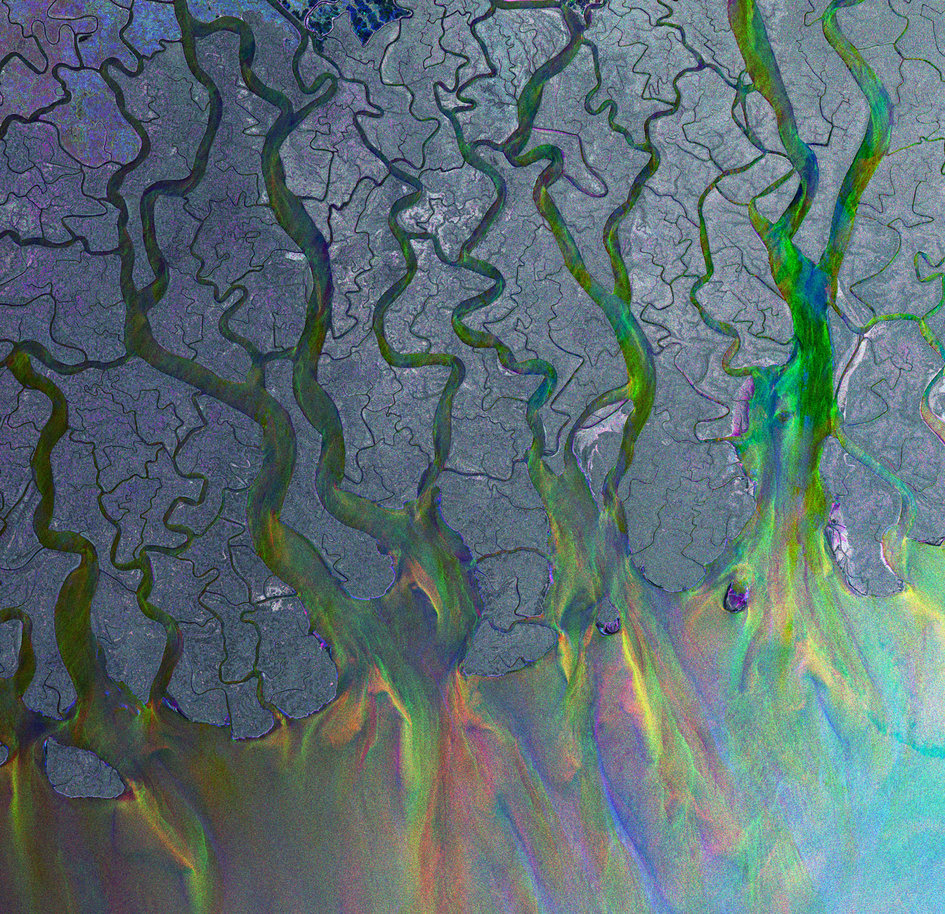This ESA image of the Ganges Delta is becoming one of the most iconic
views of Earth from space, due in no small part to it appearing as the
cover of British band Alt-J’s award-winning debut album An Awesome Wave.
Formed in 2007, the indie rock band Alt-J (‘Alt-J’ is the keyboard
shortcut on computers for the delta symbol) released their first album
last May in Europe. They won the British Mercury music prize in
November, and their album was also announced as the BBC Radio 6 Album of
the Year. The band has been nominated for three ‘Brit Awards’ (Best UK
Band, Best UK Album and Best Newcomer), and has now sold 450 000 copies
of their album worldwide.
Explaining how the band chose their album artwork, they said they were
up against a deadline so they resorted to googling ‘delta’ for
inspiration around the symbol of their name.
The band’s keyboard player Gus Unger-Hamilton said, “Instead of the
delta symbol, it was coming up with satellite images of geographical
deltas, which looked kind of amazing. So we thought perhaps we could use
one of these images for the artwork, creating a visual pun on the idea
of a delta.”
Fitting the artwork to the band's sound, Gus said, “The image is quite
psychedelic, which is a term we definitely don’t mind having applied to
our songs. Also, the abstract and indeterminate nature of the image –
most people can’t figure out what it is – somehow fits with the
hard-to-pin-down aspect of our music and its genre (or lack of).”
The image selected by the band is of the world’s largest delta, crossing
the borders of Bangladesh and India. The delta plain, about 350-km wide
along the Bay of Bengal, is formed by the confluence of the rivers
Ganges, the Brahmaputra and Meghna.
It was taken by an instrument on ESA’s Envisat Earth observation
satellite, called the Advanced Synthetic Aperture Radar, and its
‘psychedelic’ appearance was created by combining three versions of the
image taken at different times over the same area. The colours result
from variations in the surface that occurred between these acquisitions.
The world’s largest mangrove forest, the Sundarbans, is located where
the land meets the water. The Sundarbans, which means ‘beautiful forest’
in Bengali, provide a critical habitat for numerous rare species,
including the Bengal tiger and the estuarine crocodile.
By using images from space like this, scientists can study how
pollution, human encroachment, soil erosion and rising sea levels
threaten to submerge large parts of the forest into the sea. In the past
two decades, four mangrove islands have sunk and more are threatened.
Credits: European Space Agency, All Rights Reserved
ESA
Guillermo Gonzalo Sánchez Achutegui
ayabaca@gmail.com
ayabaca@hotmail.com
ayabaca@yahoo.com


No hay comentarios:
Publicar un comentario